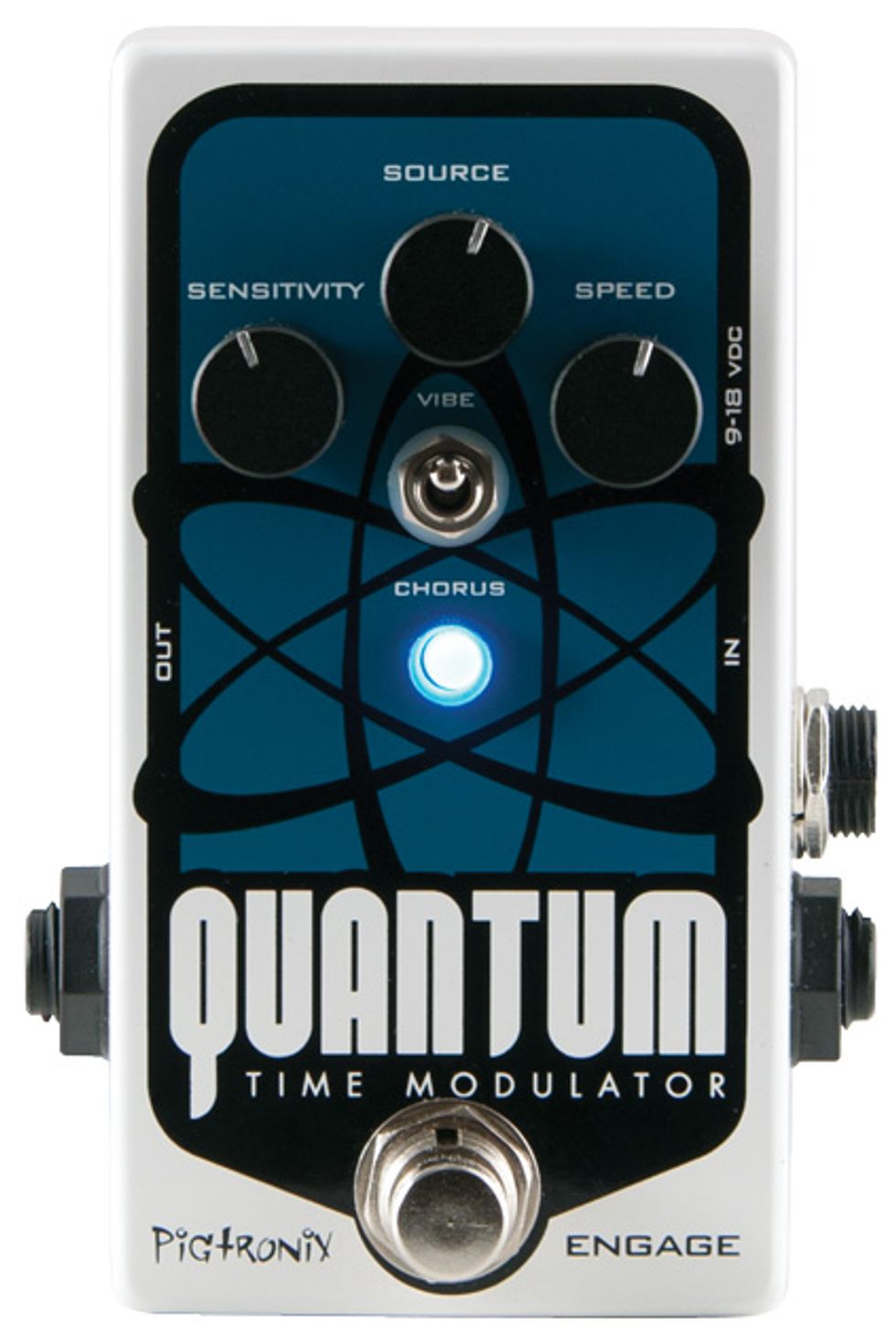This awarding-winning modulation pedal combines two classic effects—chorus and vibrato—in a compact, pedalboard-friendly package creating a wide spectrum of tones that are precise with extraordinary clarity.
Pigtronix’s Quantum Time Modulator combines two classic effects—chorus and vibrato—in a compact, pedalboard-friendly package. Beyond the basic effects, the Quantum Time Modulator ups the ante with total control over envelope and LFO settings. You can bend sounds in ways ranging from conventional to cosmic, including pitch-bent notes modulated by picking intensity, creepy hollow chorusing, and detuned madness. It’s spacy-sounding stuff, but Pigtronix’s intuitive design makes operation a breeze.
Q-36 Explosive Time ModulatorInside the Quantum Time Modulator’s rugged enclosure is an analog circuit featuring dual bucket brigade delay lines. These work in tandem with an envelope trigger and/or an LFO. With a standard guitar cable in the output jack, effects are mono, but adding a TRS insert cable at the output lets you route the signal in stereo to two amps for a more dramatic effect. (Or do as Pigtronix suggests and run the pedal in mono to a single amp in a dual-amp stereo rig—a favorite configuration of Pigtronix user Dweezil Zappa.) The pedal includes an 18-volt power adapter (there is no battery option). Bypass is a studio-quality buffer.
Ratings
Pros:
Wide, transparent, and natural-sounding pitch bending and chorusing. Small footprint. Easy to use.
Cons:
Requires included 18-volt power adapter.
Tones:
User Friendliness:
Build/Design:
Value:
Street:
$199
Pigtronix Quantum Time Modulator
pigtronix.com
Getting conventional chorusing and vibrato is easy: just set the source and speed knobs at noon, toggle to your desired effect type, and adjust the sensitivity knob to taste. From this starting point, you can adjust the source control for heavier envelope/LFO modulation, or intensify the effect by turning up the speed knob. You can also set adjust the sensitivity threshold so that effects don’t appear until you pound the strings harder.
In chorus mode with the source control set a hair above halfway, the pedal delivers stellar multi-dimensional chorusing. The effect’s breadth and shimmering highs recall the sound of an ’80s classic, the Boss DC-2 Dimension Chorus, but with a deeper, more resonant effect on the lows. Backing off the source knob gradually introduces warm, rounded Andy Summers-type chorusing. At the lowest source settings, the chorus thins out perfectly for John Frusciante-inspired funk riffing.
In vibrato mode the pedal produces smooth, natural-sounding pitch shifts that are so transparent, you might think the notes were bent manually. Even at the most intense LFO vibrato settings, the pedal never colors the dry tone with muddled mids or harsh high end, nor does it cause dramatic volume boosts. You can discern the upward and downward modulation ramps with extraordinary clarity. The clarity of the effects is the Quantum Time Modulator’s greatest strength.
The VerdictInstead of offering a confusing array of knobs and doodads, Pigtronix’s Quantum Time Modulator takes a simpler approach while still providing a wide tonal palette. Even more remarkable are its clear, uncolored tones. The big 18-volt power supply can be a drag (unless you have a power brick with an 18-volt jack), but it pays big dividends in terms of headroom and these luscious and enthralling tones are well worth the minor hassle.


